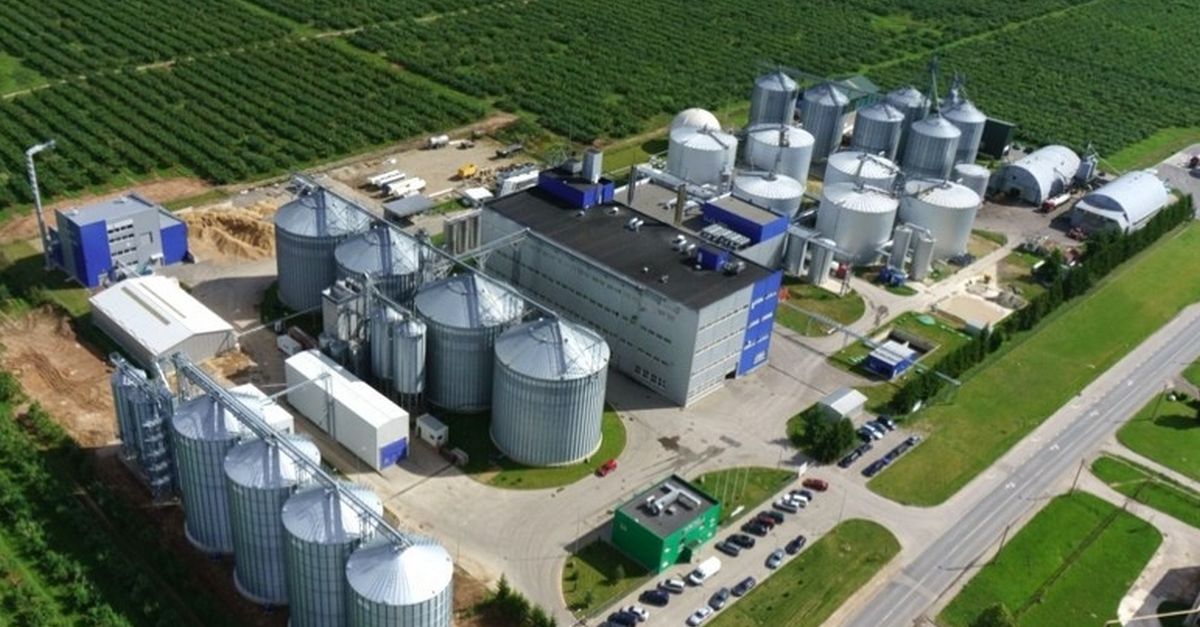Case 3.1: Kurana - production of bioethanol, electricity and heat from renewable resources in a closed technological loop - Lithuania
Name of the company: UAB Kurana
Country: Lithuania
Size of the business: 85 employees
Website: http://www.kurana.lt/en/
Background
The company started developing its bioethanol and biogas project in 2008. There were two main reasons for the investment. Firstly, in 2008 the energy was very expensive. Secondly, the construction of biogas power plants was encouraged by a feed-in tariff premium (formerly feed-in tariffs). Thus, the state support policy and market changes facilitated the investments into the biomass use.
Main activities
The enterprise produces bioethanol and biogas from grain. Biogas is converted to electricity and heat. Approximately 90% revenues come from bioethanol production and selling. Approximately 10% revenues come from energy and heating production and sales. The following changes have taken place in the production over the decade:
- Most bioethanol is produced from first-generation (grain) raw materials. However, the amount of second-generation bioethanol from starchy waste is increasing.
- The biomass after the biogas production process is concentrated and the treated water is fed back into production.
- The product mix was supplemented by disinfectant and industrial ethanol production.
- Production capacity is actually 40% higher than the designed capacity.
The main unique selling point is logistics as the enterprise’s physical location is close to the main customer, thus the logistic costs for transmission are lower.
Market
The main customers are a major national refinery (for bioethanol), electric and gas utility company (for electricity) and major boiler and heating network managing company (for heating). When the biogas and bioethanol investment project started, at first no marketing and publicity activities were carried out. Only around 2‒3 years ago the enterprise started to disseminate information on their technological loop, bioenergy production and environmental impacts.
Challenges and solutions
The enterprise plans to grow in the future, incl. investing into the plant with double production capacity of the current one and to focus on the biomass for the second-generation production and on supplying biomethane through a pipe. The main limit for expansion is the EU and national policy on bioenergy production.
Funding
The funding for the bioethanol and biogas investment had following financial model: 35% equity, 5% subsidies and 60% external capital. The initial investment to start such a project (the amount of total investment) was 30 million EUR. It took about 6‒8 years before the company started making a profit.
What makes this case innovative?
UAB Kurana is the first company inside the EU which connected manufacturing of bioethanol for biofuels, electricity and thermal energy from renewable energy sources (biogas produced by mesocphilic process) into one closed technological loop. This technological loop produces zero waste plus valuable organic fertilizers that are becoming more and more popular in contemporary farming. When building this factory, the company used the newest technologies and facilities bought from the EU countries (Germany, Denmark, Sweden and the Great Britain) and the USA.
Other related Business Cases
Case 3.2: 3B Bioenergie – energy production and special processing of digestate – Germany
Case 1.2: Quercus – production of solid biofuels for energy – Poland
Case 4.1: Przedsiębiorstwo Energetyki Cieplnej – energy efficient district heating system – Poland
Case 5.1: SunPine – an entrepreneurial bio-refinery – Sweden

